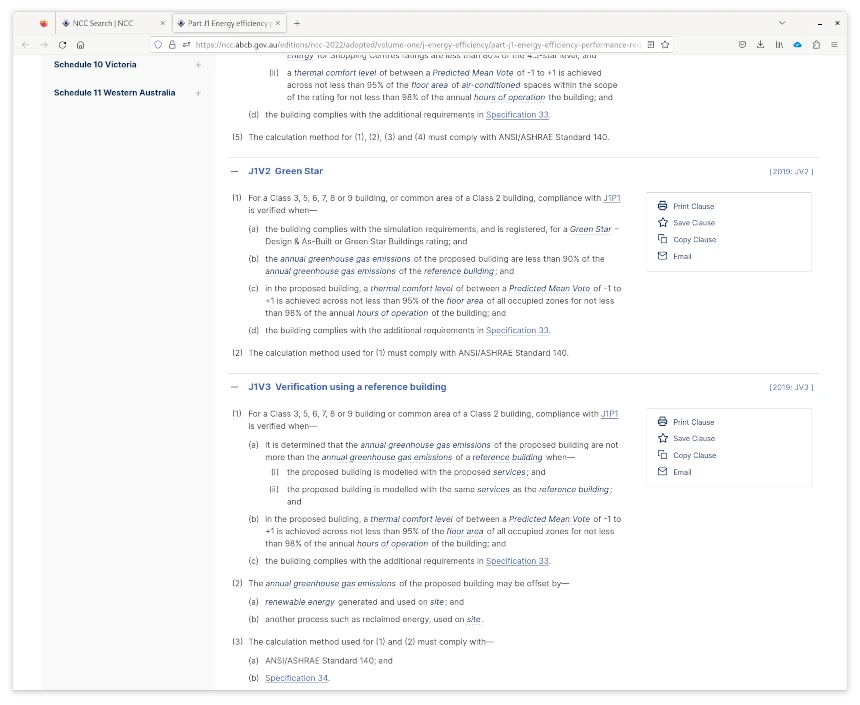The Australian National Construction Code Section J (energy efficiency performance requirements) contains many improvements that is inspired by LEED certification in the United States, but makes it mandatory for class 2-9 buildings in Australia - from 1st October 2023.
by Arne Hansen
Introduction
The NCC states that the objective of Section J is to:
- reduce energy consumption and energy peak demand; and
- reduce greenhouse gas emissions; and
- improve occupant health and amenity.
Contrary to the notion that a battery can resolve energy peak demand issues (a topic for another post), the NCC clearly states that a building must reduce energy consumption and peak demand of key energy using equipment, amongst other measures including accommodation of future installation of distributed energy resources.
Big changes
The NCC Section J has big changes. These seem to have flown under the radar, not being highlighted in the summary of changes in the NCC 2022, and with little fanfare in industry. Nor have we heard it spoken about much at ABCB and NCC events, or industry events in general.
Naturally, a mea culpa, this could be unique to me, perhaps everyone else is entirely aware! Nonetheless, I thought it worth talking about as it has major impacts upon the way buildings are designed and constructed. These changes impact the architect through consulting engineers, contractors, sub-contractors through to project completion handover.
The biggest change?
Verification - undoubtedly.
Energy modelling must now comply with ANSI/ASHRAE Standard 140, mandating the use of Energy+ or other equivalent modelling software during concept and detailed design. NATHERS software is specifically excluded from allowable methods.
The impact? A reference building must be created prior to construction in order to benchmark the performance of the built environment to that of simulation/model, very much following in the lead of LEED in the USA (excuse the pun).
Previewed in 2019
The ACT Appendix of the NCC 2019 contained an almost carbon copy of what is now becoming national construction codes in the 2022 revision.
 The NCC 2019, ACT Appendix
The NCC 2019, ACT Appendix
We see the design verification requirement to use ANSI/ASHRAE Standard 140 calculation methods regardless of using NABERS, Green Star and modelled reference building methods.

The NCC 2022, ACT Appendix provisions now expanded Australia wide
Our path towards BEM
We have been involved with the IEA/EBC Annex 81: Data-driven smart buildings since 2019 (and prior to that via Mission Innovation), which focuses upon the operational phase of the building lifecycle. As part of optimising controls for existing building stocks, and while we have preferred a data-driven approach for scalability and speed, have been researching, learning all about, and deploying physics-based building energy modelling for our clients.
We knew of 2019 NCC changes for the ACT, but, like I suspect most, somehow the 2022 changes flew under the radar. Fortunately, we have been more closely following the LEED certification scheme in the United States - for many years prior to 2019.
NCC 2022 Section J is a welcome surprise. These measures, particularly J1V3 (previously JV3) - verification using a reference building, will improve the accuracy of designs by shying away from magic spreadsheets towards proper software driven solutions.

